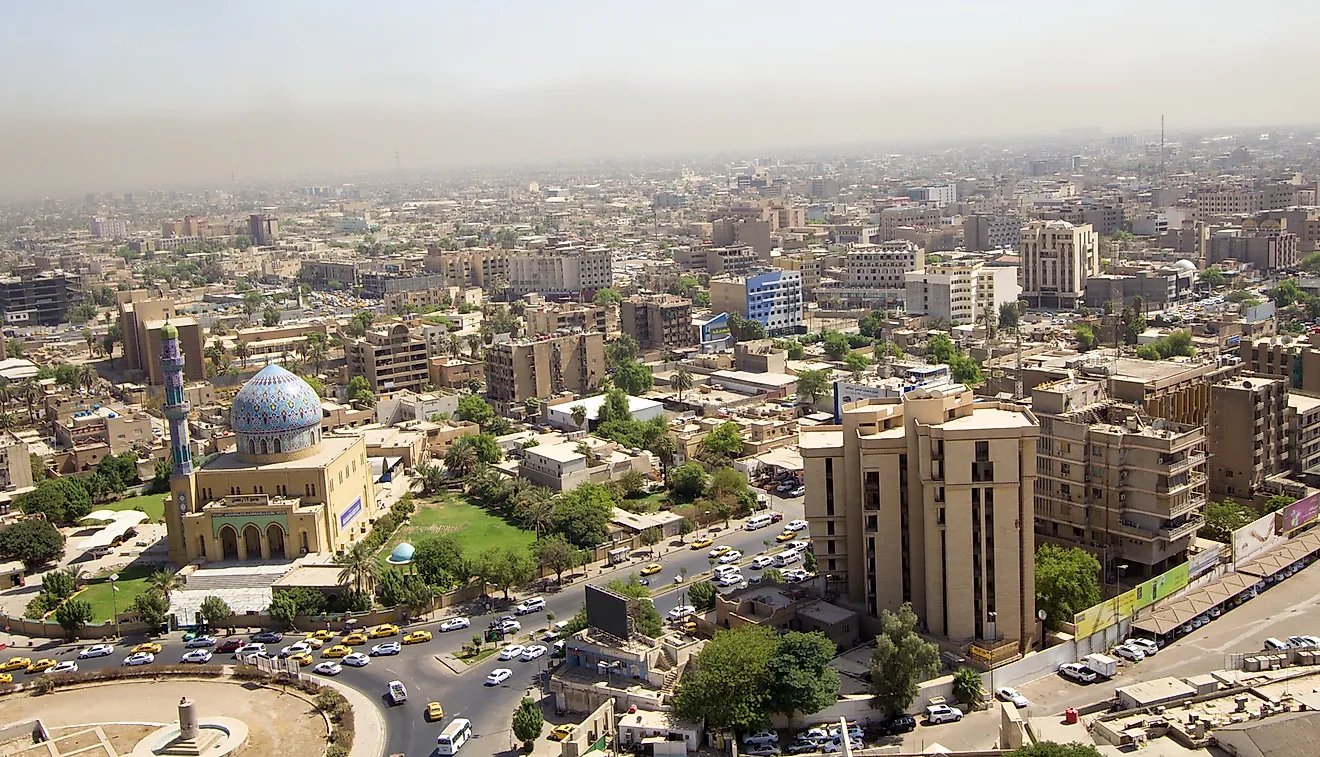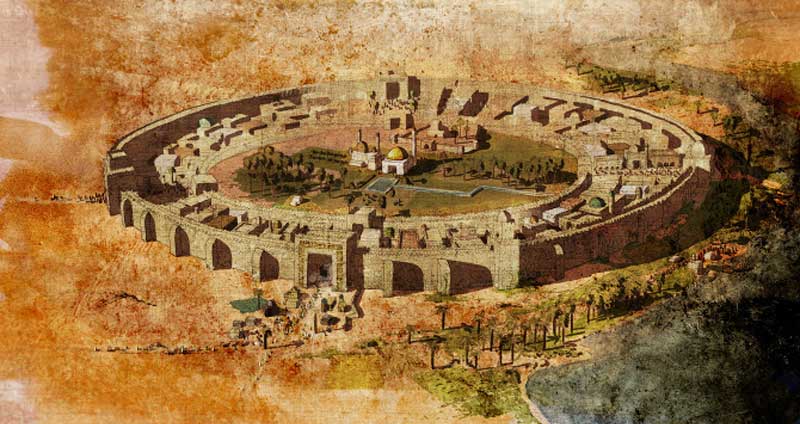Table Of Content

Four equidistant gates pierced the outer walls where straight roads led to the center of the city. The Kufa Gate to the southwest and the Basra Gate to the southeast opened onto the Sarat canal – a key part of the network of waterways that drained the waters of the Euphrates into the Tigris. The Sham (Syrian) Gate to the northwest led to the main road on to Anbar, and across the desert to Syria. To the northeast the Khorasan Gate lay close to the Tigris, leading to the bridge of boats across it.
Capital and largest city of Iraq / From Wikipedia, the free encyclopedia
Wafaa Bilal uses exhibit at Art Gallery of Windsor to resurrect burned Baghdad library - CBC.ca
Wafaa Bilal uses exhibit at Art Gallery of Windsor to resurrect burned Baghdad library.
Posted: Tue, 26 Jan 2016 08:00:00 GMT [source]
In the summer, from June through August, the average maximum temperature is as high as 44 °C (111 °F) and accompanied by sunshine. Rainfall has been recorded on fewer than half a dozen occasions at this time of year and has never exceeded 1 mm (0.04 in).[98] Even at night, temperatures in summer are seldom below 24 °C (75 °F). This is a list of notable people related to the House of Wisdom and the rise of Arab science. By measuring the position of the sun and stars, they could precisely tell the time of the day or night, or predict the moment when the sun would rise in the morning.
Books
Having built Baghdad in 762, Caliph al-Mansur (ruled 754–775 CE) moved the capital of the Abbasid dynasty there from Damascus, soon making it the richest and largest city in the world. Muslim historian al-Tabari reported that Christian monks once prophesied that a lord named Miklas would one day build a spectacular city around the area of Baghdad. The caliph was delighted upon hearing this ancient prophecy—after all, as legend has it, al-Mansur was called Miklas as a child. In modern times the library became a symbol of the scientific enterprise and imperial glory of the early Islamic period. It is frequently imagined as a centre of scholarship and collaboration for the greatest minds in Baghdad and its environs as well as the heart of a robust translation movement of Persian, Greek, and Syriac literature into the Arabic language. The Muslim libraries have played a major role in translating and transmitting works of Greek, Persian, Indian and Assyrian physicians and philosophers, works that later became the basic textbooks in European schools of Bologna, Naples and Paris.
Legacy and myth as an academy

It also shows the intellectual as well as managerial impacts that Baghdad's House of Wisdom (Bayt al-Hikmah) had on the spread of new Islamic libraries within the Muslim peninsula. Unlike what some people may believe about the ancient libraries being unable to match the contemporary bookstores, libraries were the meeting place for men of literature, science, cultures, religions, etc. Despite the sundry vicissitudes visited on the city in its history, Baghdad has maintained a mystique and allure equaled by few of the world’s cities.
History Erased: The 6 Most Heartbreaking Archaeological Destructions
Brought from China, paper became a new and cheaper material for writing, which was previously done on parchment from the skin of animals, a much more time consuming and expensive process. A wide range of languages including Arabic, Farsi, Aramaic, Hebrew, Syriac, Greek and Latin were spoken and read at the House of Wisdom. He took Greek words, such as "philosophia" that became "falsafa" in Arabic, and found translation solutions via what contemporary translators would call equivalents.
Recreational centres include two islands in the Tigris that have swimming pools and cafés, the Lunar Amusement Park, and Al-Zawrāʾ Public Park and Zoo. Beginning in the early 1990s, traditional patterns of recreation for city residents were disrupted by war and economic hardship. Although a prosperous class of government and party officials and wealthy merchants continued to frequent private clubs, most residents spent their free time either at home or visiting close friends or relatives. At its height, Baghdad was estimated to have over one and half million people living in the city.[19] It may have been the largest city in the world during that time.
KS2 / KS3 History: Great Fashion in Baghdad 900AD - BBC
KS2 / KS3 History: Great Fashion in Baghdad 900AD.
Posted: Wed, 24 Jul 2019 15:32:30 GMT [source]
Further, it was also linked to astronomical observations and other major experimental endeavors. The older core of the city, a rectangle about 2 miles (3 km) long and 1 mile (1.6 km) wide, is located on the east bank. Its length extends between two former city gates, Al-Muʿaẓẓam Gate, now Al-Muʿaẓẓam Square, in the north and Al-Sharqī Gate, now Taḥrīr Square, in the south. From the Tigris the rectangle runs eastward to the inner bund, or dike, built by the Ottoman governor Nāẓim Pasha in 1910.
Suggested Books
Abu Yusuf Ya‘qub ibn Ishaq Al-Kindi was also another historical figure that worked at the House of Wisdom. Al-Kindi is the most famous for being the first person to introduce Aristotle’s philosophy to the Arabic people. He fused Aristotle’s philosophy with Islamic theology which created an intellectual platform for philosophers and theologians to debate over 400 years. A fellow expert on Aristotle was an East African descent named Abu Uthman al-Jahith who was born in Basra around 776 but he spent most of his life in Baghdad.
Why the U.S. Should Care About Iraq
Caliphs were giving the translation movement, transmissions, authoring and intellectual achievements a very high level of respect and support that represented key factors to getting hold of the Hellenistic, Indian, and Persian knowledge and wisdom. After the invasion of Baghdad by the Mongols in (656 AH-1258 AD) they wrecked the library's private and public closets of books, manuscripts, maps, observatories...etc. They burned majority of the collections whilst others were thrown into the Tigris river, some say that the Mongols have built their barns using books instead of clay.
Often, al-Ma’mun would assign handpicked renowned scholars to perform specific translations of works. An example of such was the selection of the famous scholar Abu Yousuf Ya'qoub Al-Kindi, who had an impressive level of qualifications which included being a physician, philosopher, mathematician, geometer, logician, and astronomer, to be the one in charge of translating of the works of Aristotle. For about 500 years the city boasted the cream of intellectuals and culture, a reputation gained during the reigns of some of its most famous Caliphs (Al-Rashid, Al-Ma’mun, Al-Mu’tadhid and Al-Muktafi). From the 7th century onwards, men and women of different faiths and cultures built on knowledge from ancient civilisations making breakthroughs that have left their mark on our world.

But it is well established and uncontroversial that the much earlier academy in Alexandria was likewise more than just a library, for it not only brought together under one roof much of the world's accumulated knowledge, but acted as a magnet for many of the world's greatest thinkers and scholars. The patronage of the Egyptian Ptolemaic dynasty, which provided travel, lodging and stipends to those men, is not so different from the government research grants that university academics worldwide receive today to carry out their research. And the reign of Ma'mūn was notable for more than just the scholarly writings of these individual geniuses. Not satisfied with setting up his seat of learning, Ma'mūn ordered the building of the first astronomical observatory in Baghdad around the second decade of the ninth century. This was the only way his astronomers could check the accuracy of the various, often conflicting, Greek, Persian and Indian astronomical texts at their disposal, most notably Ptolemy's Almagest.
Baghdad is served by an extensive but chaotic bus network; maps and route information for the network are not available in English. Cycling is not uncommon among locals, but there is next to no infrastructure to support it. While the almost daily bombings and shootings have subsided for the moment, there is always a risk of getting caught in violence when travelling around the city. Overland travel is possible from all neighbouring countries and while major roads are generally in an acceptable condition, travelling by car is strongly discouraged due to violence. Baghdad is in the centre of Iraq's highway network, with Freeway 1 from Basra and continuing towards the Jordanian borde being the major thoroughfare. Adjacent to these commercial districts are older, middle-class residential areas, such as Al-Sulaykh to the north, Al-Wāziriyyah to the west, and Al-Karrādah to the south, now densely settled.


No comments:
Post a Comment